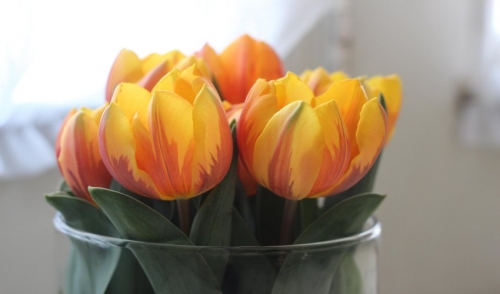
When dividing your perennials this spring, time and technique are going to be your best friends when trying to achieve the best outcome. Why divide them in the first place? To save money of course! In all seriousness, perennials grow very quickly and can form large clumps in your gardens. If you don’t divide the clumps every few years, the plants can die out because the soil is overcrowded leaving you with a dead spot in your garden. Dividing the perennials in your garden will allow you to get more out of the plants and save money by not having to buy more. Dividing also helps ensure the health of your perennials as they grow best when they are young and have room to spread into new spaces. Follow this article to learn how you can rejuvenate your garden by dividing your perennials this spring.
The first tip to dividing perennials is to divide at the right time. Always divide when it’s cool outside and when the plant looks good. Don’t divide the plant if it’s not healthy and not blooming as expected. Those are signs of an unhealthy plant and to divide would only spread more of the same. Division can be stressful on the plant, which is why dividing when it’s cool during spring can help them recover faster without having to give them excess water. These conditions will allow the roots of the perennial to grow and thrive while the tops are still low and out of the sun. These are the conditions that are going to lead to strong perennials that will last through summer. To begin the division process, dig the clump of perennials you want to remove by inserting a shovel deep into the soil around the perimeter to loosen the roots, but not cause damage. The next step is to remove the clump from the dirt using the shovel. Since it will be spring, the new growth will still be low to ground which means stems won’t be an issue while digging. A good trick to making removing the clump easier is to water the plants a few days before you dig to soften the soil and save some effort. Once you have removed your clump, assess the roots and growth of the plant. Look for signs of root damage or disease. If any part the plant is declining, add it to your compost pile or throw it out. These issues can normally be found in the outer sections of the clumps you remove. When replanting your clumps, spread out your divisions across a wide surface area. Place each division into a hole as big and wide as its roots when spread out. Let the roots be your guide and cover the soil with mulch to help conserve moisture while your new plot becomes established. Continue to care for the newly planted divisions the same you would your already existing perennials. Make sure there is plenty of water, good soil, and fertilization so that their growth reaches its full potential.
Dividing perennials gives you more control over the growth of your garden, its saves you money by making more plants, and keeps your garden beautiful. Once you get good it at, you can start to trade or share with friends, family, and neighbors.

Comments